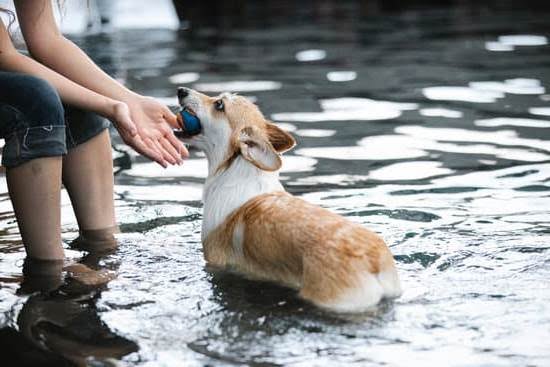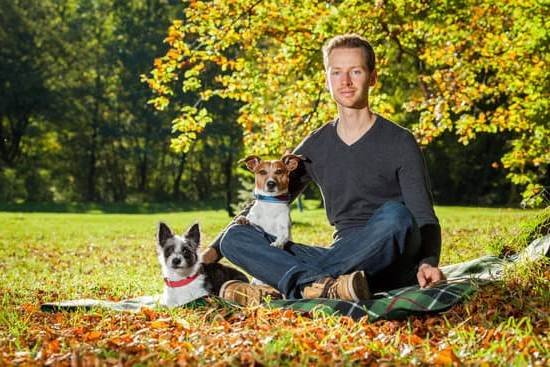Introduction
Positive dog training is an approach to training that focuses on rewarding desired behaviors and putting an end to undesirable behaviors by redirecting these unwanted actions. It’s based on the science of learning theory and rooted in reinforcing desirable behavior through positive responses such as praise, treats, toys, and play.Positive dog training also draws much of its power from the relationship between the dog and its handler, as the better they understand one another and develop a bond, the stronger the connection becomes and the more effective their results.
Advocates of positive dog training believe that dogs should be treated like family members, not automated robots performing robotic tasks. By avoiding punishing or aggressive measures like shock collars or verbal abuse, this method instead focuses squarely on positively rewarding desired behaviors with affectionate praise, food rewards or toys. This increased focus on relationship building creates a pleasant environment for both parties which research has indicated leads to enhanced mental stimulation and longer lasting effects from the high-quality reinforcement associated with this approach
In order to use positive dog training successfully, you need to adopt a certain mindset. You must commit to using patience and persistence regardless of how quickly you get results so that your pet continues understanding commands without fear or discomfort associated with punishment for failure. Additionally, it helps to create an environment where your pet knows what is expected of them in any given situation so they feel secure in following orders while simultaneously enjoying their interactions with humans as part of their overall experience when being trained.
Common Myths About Positive Dog Training
Positive dog training is a method of training dogs that emphasizes rewards and positive reinforcement versus punishment or scolding. With this approach, positive trainers ensure a dog is rewarded with praise, treats, or affection when they exhibit wanted behaviors and ignore any unwanted behaviors. Research suggests that positive reinforcement-based methods are more effective in achieving desired changes quickly and sustainably than punishment-based methods.
Common myths about positive dog training include that it is too lenient and does not set boundaries for the dog. However, setting boundaries for your pup can still be achieved through the use of redirection and reward-based techniques. Other misconceptions involve believing that gentle discipline within an exclusively reward-focused program is impossible or ineffective. Again, this is far from the truth as rewards must be balanced with some level of corrections in order to create clear expectations for the animal. Additionally, some people mistakenly believe treating dogs well will result in pampering and spoiling them. This can easily be avoided if pets are provided with appropriate rules and structure that fit their age, breed, size, and personality background.
Overall, it should be noted that positive dog training actually places less stress on both dogs and owners while being more humane than punishing your pet. Using this approach helps dogs learn which behaviors are desired as well as foster a caring relationship between owner and pup while avoiding potential aggression problems down the road due to improperly addressed undesirable behavior.
The Benefits of Positive Dog Training
Positive dog training is a method of teaching and reinforcing desired behaviors through rewards and reinforcement. The goal of positive dog training is to encourage good behavior, reduce or eliminate bad behavior, and increase overall obedience. By focusing on rewarding the correct behaviors that are desired, your dog will begin to see these behaviors as worthwhile and will strive to continue performing them in order to receive poositive reinforcement. This kind of training focuses on avoiding punishment such as scolding or deprivation.
The main benefit of this type of training lies in its effectiveness: not only can dogs learn quicker with positive reinforcement, it helps create a strong bond between you and your pup which leads to improved behavioral outcomes overall. If a corrections-based approach is used too frequently, however, it can cause discomfort for the dog and make learning difficult or unpleasant. Positive approaches lead to shorter training sessions, increased focus, steadier concentration during lessons, careful listening and even eagerness if taught properly. Dogs feel secure knowing they won’t be punished for incorrect behaviors when they’re allowed to make mistakes without fear. The result is that dogs learn more quickly because they have better clarity over what is expected from them and become confident in their giving behavior — leading to an increase in both obedience and better behavior overall.
Steps to Becoming a Positive Dog Trainer
Positive dog training is an approach to teaching and developing a strong bond between an owner and their pet. It uses rewards, reinforcement, and non-aversive techniques such as treats and toys to reward desired behaviors and discourage unwanted ones. To become a positive dog trainer, it is important to first gain an understanding of canine behavior, body language, motivation, communication and cognition.
Once these principles are understood, a trainer can begin incorporating the methods into their clients’ daily lives. Positive training helps owners fully understand why their dogs behave the way they do and how to better manage problematic situations. This training process focuses on instilling positive behaviors in both pup and person while decreasing frustration.
Positive dog training improves relationships between breeds by building mutual trust through shared rewards, praise, affection or playtime rather than punishment or intimidation. Additionally, it aids in minimizing aggression or anxiety by giving the pup clear commands that can be used consistently to ensure a safe learning environment for both animal and human alike. Finally, this method promotes enrichment activities such as agility courses that foster mental stimulation which leads to obedience and improved behavior throughout crucial stages of development.
Training Techniques for Positive Dog Training
Positive dog training is a reward-based method of teaching, that involves the use of rewards, such as treats, verbal praise or toys. The goal of positive dog training is to build cooperation and trust with your canine companion; therefore all techniques employed must be both effective and humane. Positive reinforcement is an important tool in positive dog training and should always be used over punishment or negative reinforcement when possible. A clicker can also be used for positive reinforcement during training sessions and for shaping behaviors, as it allows for a more precise timing between the correct behavior and reward. Other tools that may be used to shape your pup’s behavior include directing them verbally with commands, luring them into desired positions (such as sitting) with favorites treats or rewards, sitting with them and providing steady pressure on their collar until they comply with commands, dying off behavior (gradually); this means following commands initially but reducing rewards over time as well as positive practice – allowing for plenty of repetition so dogs are comfortable performing activities without handler interaction. Ultimately, positive dog training can encourage ongoing eagerness and enthusiasm in your furry family member while strengthening the bond between you!
Common Mistakes to Avoid with Positive Dog Training
Positive dog training is a method of teaching dogs, puppies, and other animals good behavior and obedience through rewards, encouragement, and guidance. Positive reinforcement can come in the form of treats, verbal praise, quality playtime and gentle petting. This type of training has been proven to yield better results than traditional punishment-based methods.
Common mistakes that can be made in positive dog training include:
1) Using too many treats: Providing too many treats can lead to an animal becoming reliant on food for motiviation rather than praise or other forms of positive reinforcement. It’s best to give small edible rewards intermittently during your training session.
2) Verbal reprimands: Verbal reprimands such as scolding or shouting should never be used in positive dog training – this can damage the relationship between the trainer and the dog. Instead, redirect their attention with a positive action such as a friendly game or physical affection instead.
3) Raising your voice: Yelling at dogs will only cause fear, confusion and insecurity which is counterproductive in terms of successful behavioral modification. Speak calmly while training; use short phrases and phrases rather than full sentences which may be easier for them to understand.
4) Ignoring bad behavior: Bad behavior must not be ignored; rather it should be actively discouraged whenever it is observed with a simple low tone ‘Uh-oh!’ or ‘No!’ followed by an interruption and distraction leading into an alternate desired behavior exercise such as fetching a toy or playing hide-and-seek.
Resources and Resources to Help with Positive Dog Training
Positive dog training is a type of approach to training and handling animals that focuses on developing a strong, trusting relationship between dogs and their owners through reinforcement and reward-based methods. It revolves around using positive rewards to motivate desired behaviors, rather than punishing undesirable behaviors. This can include verbal praise, treats, toys, or other forms of rewards to reinforce behaviors that the dog finds rewarding.
Resources to help with Positive Dog Training include:
1. Books such as How To Train Your Dog by Cesar Millan and The Power of Positive Dog Training by Pat Miller both provide various effective techniques for positive reinforcement-based dog training.
2. Courses such as the Certified Professional Dog Trainer (CPDT) course offer professional instruction on principles, philosophies and methodology related to applied animal behavior and dog training practices using positive reinforcement.
3. Online blogs like Positively, by Victoria Stilwell which offers free training tips for good pet parenting; Dogs Trust Canine Behaviourists which provides educational information about how our dogs learn; and The American Humane Association’s website are great sources of education on how we can best care for our canine companions through positive reinforcement methods.
4. YouTube channels like Zak George’s Dog Training Revolution offer an abundance of free content from expert trainers with instructional videos on various topics related to positive dog training techniques
Conclusion
Positive dog training is a method of teaching and reinforcing desirable behavior using positive reinforcement instead of punishment. Positive reinforcement typically involves offering rewards, such as treats or praise, when the desired behavior is exhibited by the dog. This type of training encourages positive behavioral outcomes and helps to create strong relationships between owners and their dogs. By following these principles, dog owners can build trust with their four-legged companions and gain peace of mind that their pet’s behavior will improve over time. Positive dog training has numerous advantages including: increased obedience, improved socialization skills, positive emotional responses from both the dog and its owner, increased self-confidence for the animal, a more harmonious relationship between both parties, and enhanced safety at home.

Welcome to the blog! I am a professional dog trainer and have been working with dogs for many years. In this blog, I will be discussing various topics related to dog training, including tips, tricks, and advice. I hope you find this information helpful and informative. Thanks for reading!





